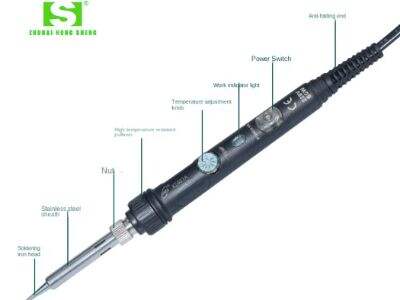Soldering is a method which can be used for joining two pieces of metal. It is a skill used in many industries including electronics, jewelry making and even crafts! A lead-free alloy is preferable for safety and health. As lead is toxic, it does not hurt to look for safer options. Tips for Using Lead-Free Soldering, From Hong Sheng.

What is Lead-Free Soldering?
Lead free Soldering is the act of combining (joining) other pieces together using a unique blend of metals. This entail can reflect metals such as silver, copper and tin to form an alloy. Together, they act as a conglomerate of sorts which form an unbreakable alliance. Lead-free solder or Solder Tools has a higher melt temperature than regular low-melt solder containing lead. Basically, you have to heat this up at a higher temperature in order for it to melt correctly. Vital information to avoid mistakes during soldering.
Getting Ready to Solder
You also have to plan everything well before you begin the soldering process. To start, you need to get the soldering iron ready. Gently rub the wood filler with a damp sponge or cloth. This is an important step, since a shiny tip will help the solder or solder bar flow easier. Next, turn on your soldering iron and make it hot. Then apply a little solder to the tip. This also facilitates in the potentially diffusion of heat onto the metal components that need to be aligned with each other.
Then clean your workbench. A clean space is a safer park or easier to work. Ensure that you have your tools close to you, including diagonal cutters, needle nose pliers, and a magnifying glass. Thanks to the preparation, you will be able to switch yourself in fully into soldering.
Choosing the Right Flux
Flux is a type of solvent that you really need to clean the metal surfaces just before you start soldering. 10 It primes the metals properly and helps them bond well. Various types of fluxes are available, and you need to choose the correct one for your particular project. Use a flux intended for lead free solders. No clean flux is a good choice because when using this flux you do not have to be concerned about any residue after soldering.
How to Apply Lead-Free Solder
And now you are good to go and start soldering! Then, take your iron and hold it over where you want the metals to connect. This is so important for having a nice connection. Apply a little bit of flux to the joint where two metal pieces come into contact, just brush protects. This will cause the solder to adhere better.
Then with light touch kind of likes when you put the solder or solder paste hand but for real place the tip then carefully set it onto the joint. Using your other hand, apply a small bead of solder to the area being heated. You want the solder to melt and flow into your joint easily. When this is done correctly, it should leave a seamless bond in the metal pieces.
At the end of the day be sure to clean and care for your tools.
Once you have finished soldering, don't forget to clean your soldering iron tip once again with a damp sponge or cloth. A clean tool lasts much longer. While you are there just give the solder joint a quick check with your finger to make sure it is well attached and strong. If you feel it was in need of more solder, repeat above step with another application.
Finally, place your solder bar and any other tools in a cool dry place to protect it from rusting or getting damages. It will ensure that your equipment is stored properly and remains in working order for the next time you need it.
 EN
EN
 AR
AR
 FR
FR
 DE
DE
 RU
RU
 VI
VI
 TH
TH
 TR
TR
 MS
MS
 BE
BE

